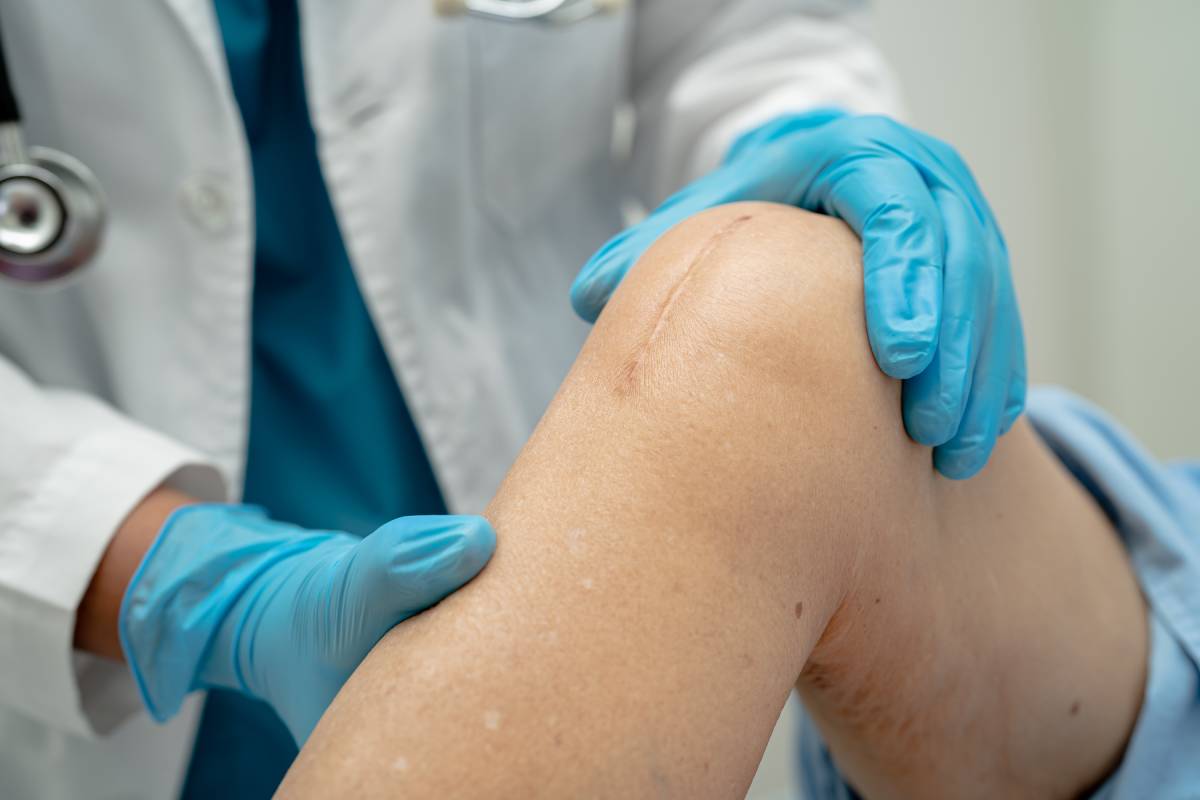Scarring and Range of Motion

Scarring is a natural part of the healing process following injury, surgery, or other trauma to the skin and underlying tissues. However, scars can significantly impact range of motion (ROM) and overall functionality, especially when they form over joints or large areas of the body. Understanding the relationship between scarring and ROM, and implementing effective management strategies, is crucial for maintaining optimal mobility and quality of life.
Scarring can lead to a reduction in range of motion through several mechanisms. First, tissue stiffening occurs. Scars are composed of collagen fibers that are denser and less flexible than normal skin—this rigidity can limit the movement of surrounding tissues and joints. Scar tissue can also form adhesions, where scar tissue binds together layers of skin, muscle, and other tissues that are normally separate. These adhesions restrict movement and can cause pain 1. Severe scarring, particularly after burns, can lead to contractures, where the skin and underlying tissues pull together and shorten. This can dramatically reduce ROM and deform the affected area 2.
Scarring can impair ROM in various parts of the body, with some areas being more prone to complications. Scars over joints (e.g. knees, elbows, shoulders) can restrict movement and cause significant functional impairment. In particular, scarring in the shoulder areas can limit head and arm movements, affecting daily activities 3.
Effective management of scarring to preserve or restore range of motion involves a combination of medical treatments, physical therapy, and preventive measures. Early intervention with physical therapy is crucial. Techniques include regular stretching to maintain tissue flexibility and prevent contractures. In addition, exercise in order to build muscle strength around the scarred area supports the affected joint and compensates for reduced ROM. Therapists can also perform manual techniques like various massages to break down adhesions and mobilize scar tissue 4,5. Myofascial release and soft tissue massage in particular can be helpful 3.
Various topical treatments can also improve scar appearance and flexibility. Silicone gel sheets help flatten and soften scars, making them less restrictive. Moisturizers and hydrating ointments keep scar tissue hydrated and can improve its elasticity 6,7.
In more severe cases, various medical and surgical interventions can be carried out. Steroid injections can reduce inflammation and improve scar flexibility. Laser treatments can minimize scar thickness and improve skin texture. In cases of severe contractures or functionally limiting scars, surgical revision may be necessary to release scar tissue and restore ROM 8,9.
Preventive measures can help minimize the incidence of decreased ROM from scarring. Effective wound care during the initial healing phase can minimize excessive scarring. In addition, wearing pressure garments after burns or surgeries can help flatten scars and prevent contractures 10,11.
Scarring can significantly impact range of motion, leading to functional impairments and reduced quality of life. By understanding the mechanisms through which scars affect mobility and implementing a comprehensive management plan, individuals can minimize the negative effects of scarring on ROM.
References
1. What is Scar Tissue and How Does it Affect Your Range of Motion? | Ankeny, IA Patch. Available at: https://patch.com/iowa/ankeny/what-is-scar-tissue-and-how-does-it-affect-your-range-of-motion. (Accessed: 7th June 2024)
2. Brissett, A. E. & Sherris, D. A. Scar contractures, hypertrophic scars, and keloids. Facial Plast. Surg. (2001). doi:10.1055/s-2001-18827
3. What To Do When Post-Surgical Scar Tissue Is Affecting You. Available at: https://www.houstonmethodist.org/blog/articles/2024/jan/what-to-do-when-post-surgical-scar-tissue-is-affecting-you/. (Accessed: 7th June 2024)
4. Zhang, Y. ting, Li-Tsang, C. W. P. & Au, R. K. C. A Systematic Review on the Effect of Mechanical Stretch on Hypertrophic Scars after Burn Injuries. Hong Kong Journal of Occupational Therapy (2017). doi:10.1016/j.hkjot.2016.11.001
5. Scar Tissue Massage and Management. Available at: https://www.verywellhealth.com/scar-tissue-massage-and-management-2696639. (Accessed: 7th June 2024)
6. Bleasdale, B., Finnegan, S., Murray, K., Kelly, S. & Percival, S. L. The Use of Silicone Adhesives for Scar Reduction. Adv. Wound Care (2015). doi:10.1089/wound.2015.0625
7. Tran, B., Wu, J. J., Ratner, D. & Han, G. Topical Scar Treatment Products for Wounds: A Systematic Review. Dermatologic Surgery (2020). doi:10.1097/DSS.0000000000002712
8. Scar Revision | Johns Hopkins Medicine. Available at: https://www.hopkinsmedicine.org/health/treatment-tests-and-therapies/scar-revision. (Accessed: 7th June 2024)
9. Medical Treatment for Scars & Keloids | NYU Langone Health. Available at: https://nyulangone.org/conditions/scars-keloids/treatments/medical-treatment-for-scars-keloids. (Accessed: 7th June 2024)
10. Al-Shaqsi, S. & Al-Bulushi, T. Cutaneous scar prevention and management: Overview of current therapies. Sultan Qaboos University Medical Journal (2016). doi:10.18295/squmj.2016.16.01.002
11. Proper wound care: How to minimize a scar. Available at: https://www.aad.org/public/everyday-care/injured-skin/burns/wound-care-minimize-scars. (Accessed: 7th June 2024)
